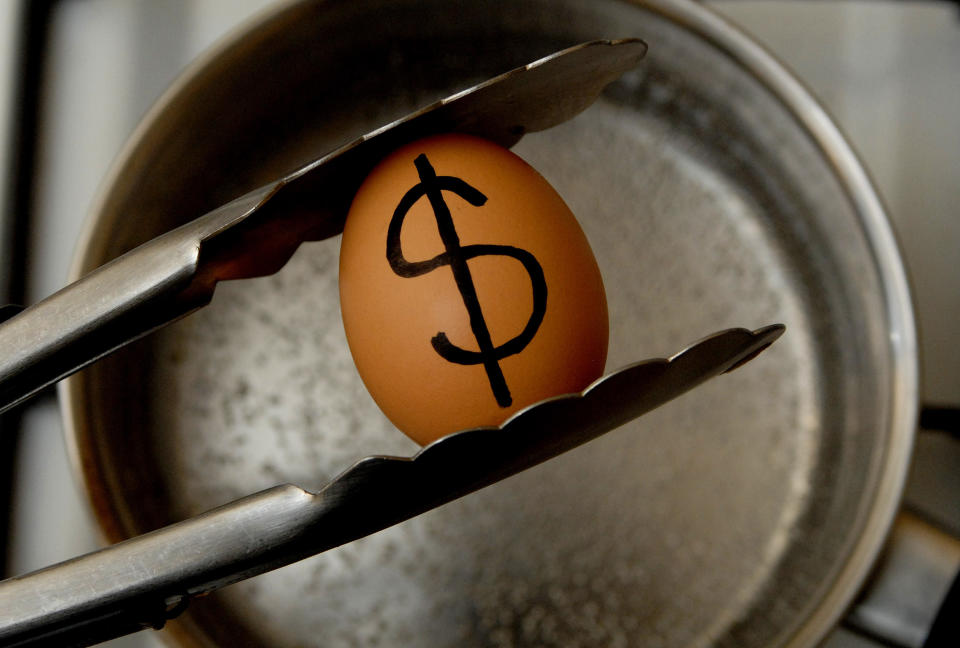Here's the best investment strategy according to your age

Many of us know that time in the market and the magic of compound interest are key to successful, long term investing. Very general rules such as not putting all your funds into one investment and diversification should apply no matter how old you are.
But as birthdays pass and your nest egg grows, your investment strategy and risk need to be rethought – there comes a point when you need to switch from thinking about outright returns, to protecting the nest egg that you’ve worked so hard to build.
Young investors < 50 years: take chances
When you’re young and just starting out you’re trying to accumulate capital and don’t really have much to lose, so it’s appropriate to chase high returns and accept high risks.
Your early years are the time to take chances! Think about investing in higher risk assets like shares and property.
As you enter your 30s and 40s it’s likely that you will be paying off a mortgage or two and may have childcare and school fee expenses absorbing the majority of earnings.
I’d suggest a split between defensive and growth assets of 30/70, although both of the percentages could be higher.
For example, a young couple saving for a home might have practically all of their investments in defensive assets, while those with no intention of buying property or having children might really ramp up higher risk and higher return investments.
We also can’t assume that young people haven’t already got considerable wealth. There’s no guarantee that the high incomes will continue, and they should be thinking about setting aside a reasonable sum into low risk defensive assets, just like a retiree, as they don’t know how long they have to make the funds last!
Peak wealth investors over 50 years: take some risk off the table
Just before you plan to retire and for the first few years after it, you need to be more protective of the money pot you’ve built over your working life.
At this point, I’d suggest you start transitioning your portfolio by increasing the value of your defensive assets, which include bonds, to an even 50/50 split.
Most investors don’t have the time to recover from a severe market disruption, such as a global financial crisis type event where the value of shares plummeted by more than 50%. So, it’s time to take some risk off the table.
We commonly see investors holding too much in cash and earning low returns. A good one-year term deposit rate is 2.7%pa at the moment, which is too low. It’s therefore worth exploring corporate bonds, which are also good defensive assets. They are a little more risky than deposits, so pay more. I’d usually say that a low risk corporate bond portfolio would pay 1-2%pa more than deposits throughout the economic cycle.
The bonds also have some handy advantages over deposits – they’re tradable and unlike a term deposit, do not incur penalties if you need to access your capital. They can earn higher than expected returns and floating rate bonds hedge against higher interest rates, while inflation linked bonds provide a 100% hedge against inflation.
Retirees >65 years: think defensively
In retirement there are a few great unknowns:
How long you will live (also known as longevity risk)
If you can make your funds last
Your capacity to rejoin the workforce and thus derive to a steady income if you need to
The rates of return available on your investments
Inflation risk
Sequencing risk
It’s been shown that retirees spend quite a lot straight after retirement as they travel and do things they have been waiting to experience. While they can possibly defer retirement or re-enter the workforce as back up plans, neither is guaranteed (or desirable) and so investors in this age bracket should transition to a predominantly defensive asset class allocation.
I’d suggest a 70/30 split. If you haven’t saved enough, now is not the right time to invest in high-risk assets and lose valuable capital, better to largely preserve what you have. That means holding more in bonds and perhaps an annuity.
Liz Moran, Director – Education and Research, FIIG Securities

 Yahoo Finance
Yahoo Finance 